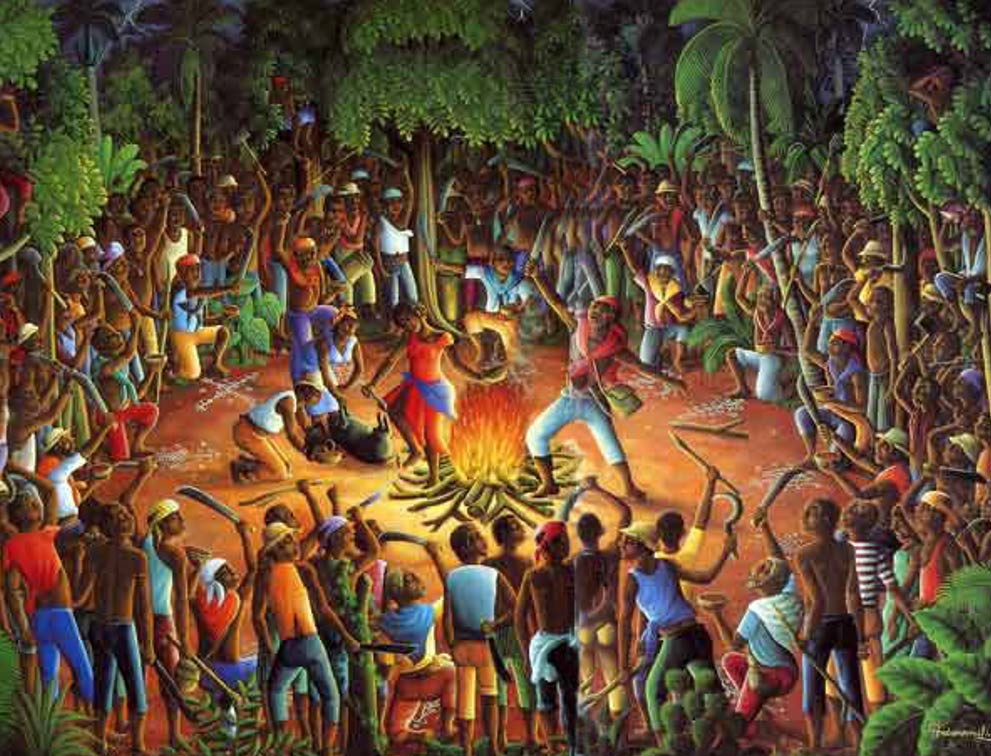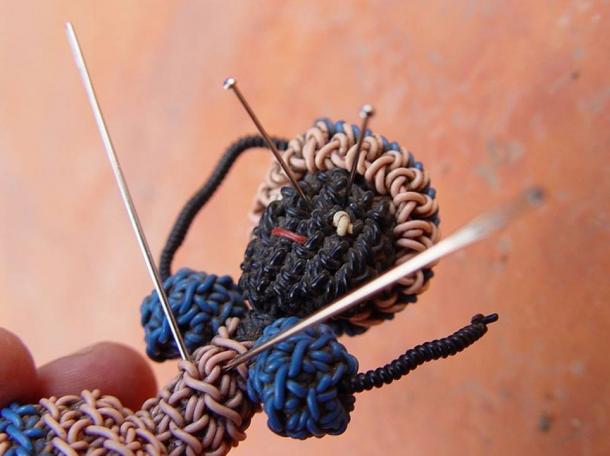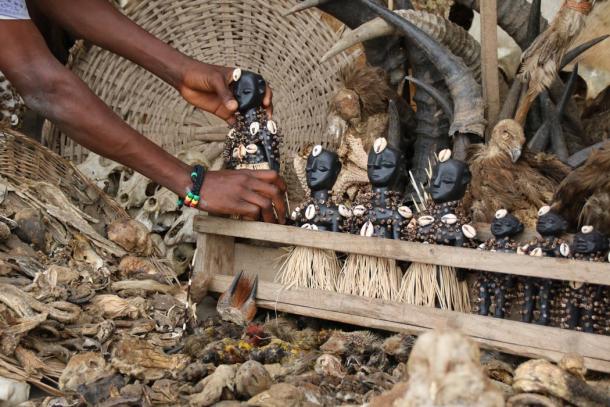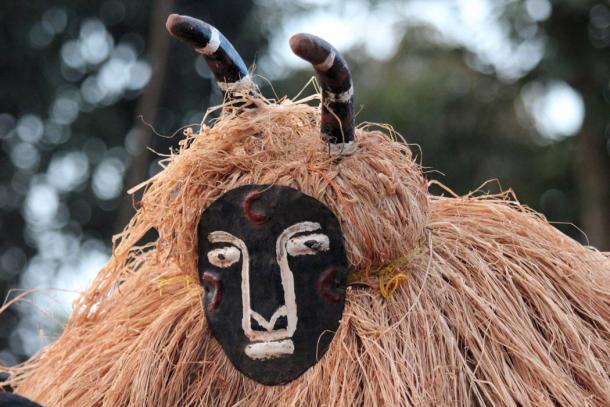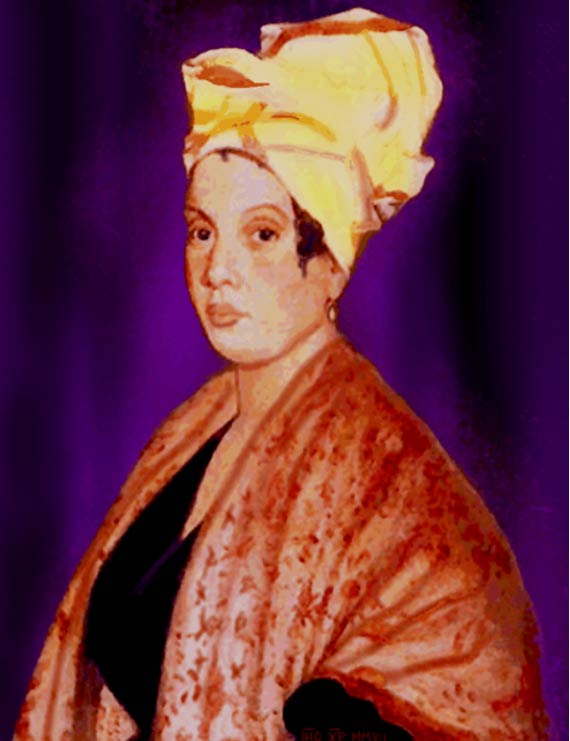Mr. Ed
Be what you is not what you what you ain’t
- Location
- Central NY
Humanities › History & Culture
:max_bytes(150000):strip_icc()/Hexenprozess1-5c66483f46e0fb00015e7891.jpeg)
Unknown/Wikimedia Commons/Public Domain
The Malleus Maleficarum, a Latin book written in 1486 and 1487, is also known as "The Hammer of Witches." This is a translation of the title. Authorship of the book is credited to two German Dominican monks, Heinrich Kramer and Jacob Sprenger. The two were also theology professors. Sprenger's role in writing the book is now thought by some scholars to have been largely symbolic rather than active.
The Malleus Maleficarum was not the only document about witchcraft written in the medieval period, but it was the best-known of the time. Because it came so soon after Gutenberg's printing revolution, it was more widely distributed than previous hand-copied manuals. The Malleus Maleficarum came at a peak point in European witchcraft accusations and executions. It was a foundation for treating witchcraft not as a superstition, but as a dangerous and heretical practice of associating with the Devil — and therefore, a great danger to society and to the church.
The Inquisition helped to codify both church and secular laws on the subject and began to determine which authority, secular or church, had responsibility for which offenses. Prosecutions for witchcraft, or Maleficarum, were prosecuted primarily under secular laws in Germany and France in the 13th century, and in Italy in the 14th.
Papal Support
In about 1481, Pope Innocent VIII heard from the two German monks. The communication described cases of witchcraft they'd encountered and complained that church authorities were not sufficiently cooperative with their investigations.
Several popes before Innocent VIII, notably John XXII and Eugenius IV, had written or taken action on witches. Those popes were concerned with heresies and other beliefs and activities contrary to church teachings that were thought to undermine those teachings.
After Innocent VIII received the communication from the German monks, he issued a papal bull in 1484 that gave full authority to the two inquisitors, threatening with excommunication or other sanctions any who "molested or hindered in any manner" their work.
This bull, called Summus desiderantes affectibus (desiring with supreme ardor) from its opening words, put the pursuit of witches clearly in the neighborhood of pursuing heresy and promoting the Catholic faith.
This threw the weight of the whole church behind the witch hunts. It also strongly argued that witchcraft was heresy not because it was a superstition, but because it represented a different kind of heresy. Those practicing witchcraft, the book argued, made agreements with the Devil and cast harmful spells.
The Malleus Maleficarum documented beliefs about witches and then enumerated ways to identify witches, convict them of the charge of witchcraft, and execute them for the crime.
The book was divided into three sections. The first was to answer skeptics who thought that witchcraft was just a superstition, a view shared by some previous popes. This part of the book attempted to prove that the practice of witchcraft was real and that those practicing witchcraft really did make agreements with the Devil and cause harm to others. Beyond that, the section asserts that not believing in witchcraft is itself heresy. The second section sought to prove that real harm was caused by Maleficarum. The third section was a manual for the procedures to investigate, arrest, and punish witches.
Women and Midwives
The manual charges that witchcraft was mostly found among women. The manual bases this on the idea that both good and evil in women tend to be extreme. After providing many stories of women's vanity, tendency toward lying, and weak intellect, the inquisitors also allege that a woman's lust is at the basis of all witchcraft, thus making witch accusations also sexual accusations.
Midwives are especially singled out as wicked for their supposed ability to prevent conception or terminate a pregnancy by deliberate miscarriage. They also claim midwives tend to eat infants, or, with live births, offer children to devils.
The manual asserts that witches make a formal pact with the Devil, and copulate with incubi, a form of devils who have the appearance of life through "aerial bodies." It also asserts that witches can possess another person's body. Another assertion is that witches and devils can make male sexual organs disappear.
Many of their sources of "evidence" for the weakness or wickedness of wives are, with unintentional irony, pagan writers like Socrates, Cicero, and Homer. They also drew heavily on writings of Jerome, Augustine, and Thomas of Aquinas.
One concern was about witnesses. Who could be witnesses in a witchcraft case? Among those who could not be witnesses were "quarrelsome women," presumably to avoid charges from those known to pick fights with neighbors and family.
Should the accused be informed of who had testified against them? The answer was no if there was a danger to the witnesses, but that the identity of witnesses should be known to the prosecuting lawyers and the judges.
Was the accused to have an advocate? An advocate could be appointed for the accused, though witness names could be withheld from the advocate. It was the judge, not the accused, who selected the advocate. The advocate was charged with being both truthful and logical.
The women were to be stripped in their cells by other women, and examined for "any instrument of witchcraft." Hair was to be shaved from their bodies so that "devil's marks" could be seen more easily. How much hair was shaved varied.
These "instruments" could include both physical objects concealed, and also bodily marks. Beyond such "instruments," there were other signs by which, the manual claimed, a witch could be identified. For example, being unable to weep under torture or when before a judge was a sign of being a witch.
There were references to the inability to drown or burn a witch who still had any "objects" of witchcraft concealed or who were under the protection of other witches. Thus, tests were justified to see if a woman could be drowned or burned.
If she could be drowned or burned, she might be innocent. If she could not be, she was probably guilty. If she did drown or was successfully burned, while that might be a sign of her innocence, she was not alive to enjoy the exoneration.
A witch who confessed quickly was said to have been abandoned by the Devil, and those who kept a "stubborn silence" had the Devil's protection. They were said to be more tightly bound to the Devil.
Torture was seen as, essentially, an exorcism. It was to be frequent and often, to proceed from gentle to harsh. If the accused witch confessed under torture, however, she must also confess later while not being tortured for the confession to be valid.
If the accused continued to deny being a witch, even with torture, the church could not execute her. However, they could turn her over after a year or so to secular authorities — who often had no such limitations.
After confessing, if the accused then also renounced all heresy, the church could permit the "penitent heretic" to avoid a death sentence.
But the prosecutor, in giving such a promise of her life, explicitly did not have to tell her the whole truth: that she could not be executed without a confession. The prosecution also did not have to tell her that she could be imprisoned for life "on bread and water" after implicating others, even if she did not confess — or that secular law, in some locales, could still execute her.
To ensure that others cooperated in investigations and prosecutions, penalties and remedies were listed for those who directly or indirectly obstructed an investigation. These penalties for the uncooperative included excommunication. If the lack of cooperation was persistent, those who obstructed an investigation faced condemnation as heretics themselves. If those obstructing the witch hunts did not repent, they could be turned over to secular courts for punishment.
The manual was used by both Catholics and Protestants. Although widely consulted, it was never given the official imprimatur of the Catholic church.
Although publication was aided by Gutenberg's invention of movable type, the manual itself was not in continuous publication. When witchcraft prosecutions increased in some areas, the wider publication of the Malleus Maleficarum followed.
Insignificant men with a desire to rule and control women.
Malleus Maleficarum, the Medieval Witch Hunter Book
The European Witch Hunters' Manual:max_bytes(150000):strip_icc()/Hexenprozess1-5c66483f46e0fb00015e7891.jpeg)
Unknown/Wikimedia Commons/Public Domain
The Malleus Maleficarum, a Latin book written in 1486 and 1487, is also known as "The Hammer of Witches." This is a translation of the title. Authorship of the book is credited to two German Dominican monks, Heinrich Kramer and Jacob Sprenger. The two were also theology professors. Sprenger's role in writing the book is now thought by some scholars to have been largely symbolic rather than active.
The Malleus Maleficarum was not the only document about witchcraft written in the medieval period, but it was the best-known of the time. Because it came so soon after Gutenberg's printing revolution, it was more widely distributed than previous hand-copied manuals. The Malleus Maleficarum came at a peak point in European witchcraft accusations and executions. It was a foundation for treating witchcraft not as a superstition, but as a dangerous and heretical practice of associating with the Devil — and therefore, a great danger to society and to the church.
The Witches Hammer
During the 9th through 13th centuries, the church had established and enforced penalties for witchcraft. Originally, these were based on the church's assertion that witchcraft was a superstition. Thus, belief in witchcraft was not in accord with the church's theology. This associated witchcraft with heresy. The Roman Inquisition was established in the 13th century to find and punish heretics, seen as undermining the church's official theology and therefore a threat to the very foundations of the church. At about that same time, secular law became involved in prosecutions for witchcraft.The Inquisition helped to codify both church and secular laws on the subject and began to determine which authority, secular or church, had responsibility for which offenses. Prosecutions for witchcraft, or Maleficarum, were prosecuted primarily under secular laws in Germany and France in the 13th century, and in Italy in the 14th.
Papal Support
In about 1481, Pope Innocent VIII heard from the two German monks. The communication described cases of witchcraft they'd encountered and complained that church authorities were not sufficiently cooperative with their investigations.
Several popes before Innocent VIII, notably John XXII and Eugenius IV, had written or taken action on witches. Those popes were concerned with heresies and other beliefs and activities contrary to church teachings that were thought to undermine those teachings.
After Innocent VIII received the communication from the German monks, he issued a papal bull in 1484 that gave full authority to the two inquisitors, threatening with excommunication or other sanctions any who "molested or hindered in any manner" their work.
This bull, called Summus desiderantes affectibus (desiring with supreme ardor) from its opening words, put the pursuit of witches clearly in the neighborhood of pursuing heresy and promoting the Catholic faith.
This threw the weight of the whole church behind the witch hunts. It also strongly argued that witchcraft was heresy not because it was a superstition, but because it represented a different kind of heresy. Those practicing witchcraft, the book argued, made agreements with the Devil and cast harmful spells.
New Handbook for Witch Hunters
Three years after the papal bull was issued, the two inquisitors, Kramer and possibly Sprenger, produced a new handbook for inquisitors on the subject of witches. Their title was Malleus Maleficarum. The word Maleficarum means harmful magic, or witchcraft, and this manual was to be used to hammer out such practices.The Malleus Maleficarum documented beliefs about witches and then enumerated ways to identify witches, convict them of the charge of witchcraft, and execute them for the crime.
The book was divided into three sections. The first was to answer skeptics who thought that witchcraft was just a superstition, a view shared by some previous popes. This part of the book attempted to prove that the practice of witchcraft was real and that those practicing witchcraft really did make agreements with the Devil and cause harm to others. Beyond that, the section asserts that not believing in witchcraft is itself heresy. The second section sought to prove that real harm was caused by Maleficarum. The third section was a manual for the procedures to investigate, arrest, and punish witches.
Women and Midwives
The manual charges that witchcraft was mostly found among women. The manual bases this on the idea that both good and evil in women tend to be extreme. After providing many stories of women's vanity, tendency toward lying, and weak intellect, the inquisitors also allege that a woman's lust is at the basis of all witchcraft, thus making witch accusations also sexual accusations.
Midwives are especially singled out as wicked for their supposed ability to prevent conception or terminate a pregnancy by deliberate miscarriage. They also claim midwives tend to eat infants, or, with live births, offer children to devils.
The manual asserts that witches make a formal pact with the Devil, and copulate with incubi, a form of devils who have the appearance of life through "aerial bodies." It also asserts that witches can possess another person's body. Another assertion is that witches and devils can make male sexual organs disappear.
Many of their sources of "evidence" for the weakness or wickedness of wives are, with unintentional irony, pagan writers like Socrates, Cicero, and Homer. They also drew heavily on writings of Jerome, Augustine, and Thomas of Aquinas.
Procedures for Trials and Executions
The third part of the book deals with the goal of exterminating witches through trial and execution. The detailed guidance given was designed to separate false accusations from truthful ones, always assuming that witchcraft and harmful magic really existed, rather than being a superstition. It also assumed that such witchcraft did real harm to individuals and undermined the church as a kind of heresy.One concern was about witnesses. Who could be witnesses in a witchcraft case? Among those who could not be witnesses were "quarrelsome women," presumably to avoid charges from those known to pick fights with neighbors and family.
Should the accused be informed of who had testified against them? The answer was no if there was a danger to the witnesses, but that the identity of witnesses should be known to the prosecuting lawyers and the judges.
Was the accused to have an advocate? An advocate could be appointed for the accused, though witness names could be withheld from the advocate. It was the judge, not the accused, who selected the advocate. The advocate was charged with being both truthful and logical.
Examinations and Signs
Detailed directions were given for examinations. One aspect was a physical examination, looking for "any instrument of witchcraft," which included marks on the body. It was assumed most of the accused would be women, for the reasons given in the first section.The women were to be stripped in their cells by other women, and examined for "any instrument of witchcraft." Hair was to be shaved from their bodies so that "devil's marks" could be seen more easily. How much hair was shaved varied.
These "instruments" could include both physical objects concealed, and also bodily marks. Beyond such "instruments," there were other signs by which, the manual claimed, a witch could be identified. For example, being unable to weep under torture or when before a judge was a sign of being a witch.
There were references to the inability to drown or burn a witch who still had any "objects" of witchcraft concealed or who were under the protection of other witches. Thus, tests were justified to see if a woman could be drowned or burned.
If she could be drowned or burned, she might be innocent. If she could not be, she was probably guilty. If she did drown or was successfully burned, while that might be a sign of her innocence, she was not alive to enjoy the exoneration.
Confessing Witchcraft
Confessions were central to the process of investigating and trying suspected witches, and made a difference in the outcome for the accused. A witch could only be executed by the church authorities if she herself confessed, but she could be questioned and even tortured with the aim of getting a confession.A witch who confessed quickly was said to have been abandoned by the Devil, and those who kept a "stubborn silence" had the Devil's protection. They were said to be more tightly bound to the Devil.
Torture was seen as, essentially, an exorcism. It was to be frequent and often, to proceed from gentle to harsh. If the accused witch confessed under torture, however, she must also confess later while not being tortured for the confession to be valid.
If the accused continued to deny being a witch, even with torture, the church could not execute her. However, they could turn her over after a year or so to secular authorities — who often had no such limitations.
After confessing, if the accused then also renounced all heresy, the church could permit the "penitent heretic" to avoid a death sentence.
Implicating Others
The prosecutors had permission to promise an unconfessed witch her life if she provided evidence of other witches. This would produce more cases to investigate. Those she implicated would then be subject to investigation and trial, on the assumption that the evidence against them might have been a lie.But the prosecutor, in giving such a promise of her life, explicitly did not have to tell her the whole truth: that she could not be executed without a confession. The prosecution also did not have to tell her that she could be imprisoned for life "on bread and water" after implicating others, even if she did not confess — or that secular law, in some locales, could still execute her.
Other Advice and Guidance
The manual included specific advice to judges on how to protect themselves from the spells of witches, under the obvious assumption that they would worry about becoming targets if they prosecuted witches. Specific language was given to be used by the judges in a trial.To ensure that others cooperated in investigations and prosecutions, penalties and remedies were listed for those who directly or indirectly obstructed an investigation. These penalties for the uncooperative included excommunication. If the lack of cooperation was persistent, those who obstructed an investigation faced condemnation as heretics themselves. If those obstructing the witch hunts did not repent, they could be turned over to secular courts for punishment.
After Publication
There had been such handbooks before, but none with the scope or with such papal backing as this one. While the supporting papal bull was limited to southern Germany and Switzerland, in 1501 Pope Alexander VI issued a new papal bull. The cum acceperimus authorized an inquisitor in Lombardy to pursue witches, broadening the authority of witch hunters.The manual was used by both Catholics and Protestants. Although widely consulted, it was never given the official imprimatur of the Catholic church.
Although publication was aided by Gutenberg's invention of movable type, the manual itself was not in continuous publication. When witchcraft prosecutions increased in some areas, the wider publication of the Malleus Maleficarum followed.
Insignificant men with a desire to rule and control women.


